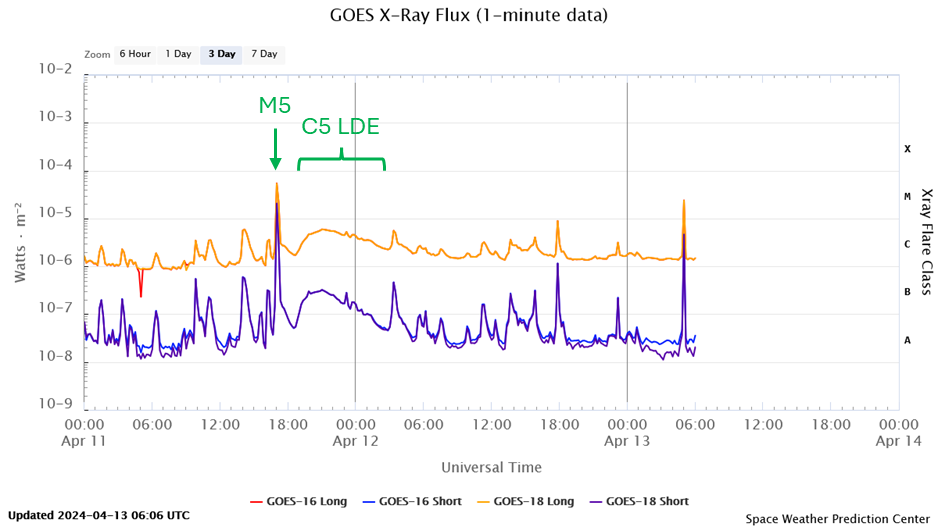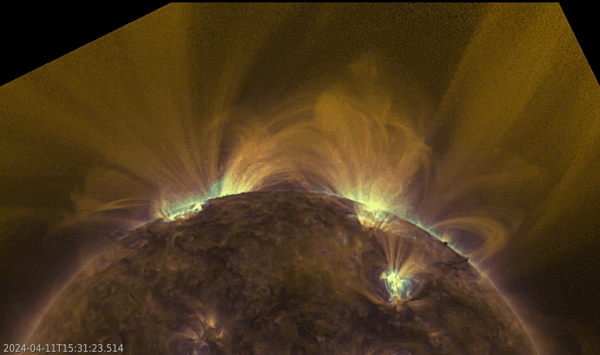The strongest flaring event last week was an M5.4 peaking at 17:06UTC on 11 April. Its source was uncertain, but was possibly from one of the active regions beyond the southeast limb based on observed coronal loops and associated coronal mass ejection (CME). A fast but faint CME was indeed observed in the southeast direction in SOHO's LASCO/C3 imagery starting already at 17:31UTC. The annotated graph underneath shows the evolution of the soft x-rays flux as observed by GOES with the M5 flare indicated.

It was followed by a slow but spectacular long duration event (LDE) just beyond the Sun's northeast limb. The eruption got no flare designation, but peaked at 21:00UTC reaching a maximum intensity of C5.9. The event lasted for a whopping 6 hours from 18:30UTC until 00:30UTC on 12 April. At that time, impressive post-eruption coronal loops could be seen towering above the solar limb. The compilation underneath combines extreme ultraviolet (EUV) images from GOES/SUVI 094, showing the Sun at multi-million degrees, with those from GOES/SUVI 171 which display the Sun at a temperature of 700.000 degrees. The colors used are respectively purple/blue and yellow. The images are rotated by 90 degrees such that east is on top and north to the right. This provides a better view on the entire east limb, with a lot of dynamics going on in the Sun's outer atmosphere (the "corona"), as shown in SUVI's wide field-of-view. Note there is still a trans-equatorial connection between active regions in the northern and southern hemisphere, as can be gauged from the bridging coronal loops in the background. This was also the case during the previous solar rotation, between NOAA 3614 and 3615, as mentioned in this newsflash and in this comparison.

A potent CME was observed in LASCO/C3 coronagraphic imagery starting at 20:03UTC. When it became visible, the faint outlines of the previous CME (related to the M5 flare) were still distinguishable in the difference images (i.e. one image subtracted from the next). Its plane-of-the-sky speed was substantially slower than that of the M5-related CME, 380 km/s versus 1300 km/s (CACTus). As the CMEs were both related to farside eruptions, they had no earth-directed components. In the imagery underneath, east is to the left and north is up (compilation).






